Explore the rich and complex history of Norway through this carefully curated timeline of key events, from early human settlement to the present day.
When I moved to Norway in 2011, I didn’t know a great deal about the country’s history other than the Viking Age. Since that time, I’ve learned so much about the fascinating layers of history throughout Norway and Scandinavia.
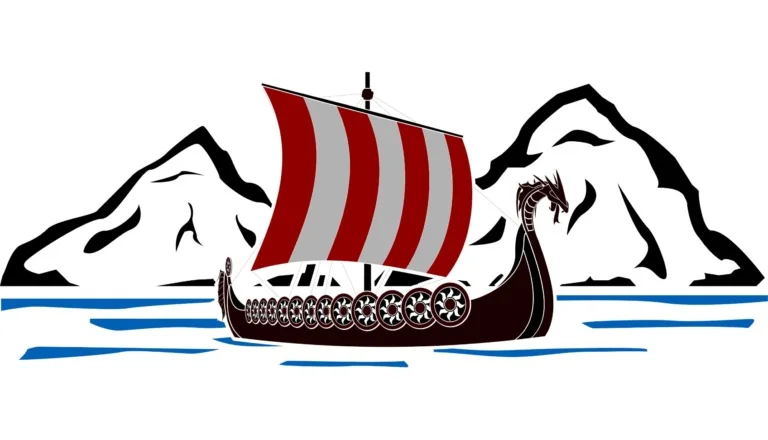
Though modern Norway only achieved full independence in 1814, the land’s history stretches far beyond this milestone. Many people are familiar with the Vikings and Norway’s ‘oil age’, but the nation's past holds so many more stories.
This timeline covers not just these iconic periods but also the lesser-known eras that shaped Norway—from prehistoric settlers to centuries of union with Denmark and Sweden.
The timeline below offers a window into Norway's past, shedding light on the people, cultures, and events that forged the country we know today.
Norway's Prehistoric Timeline
The history of Norway has long been influenced by both the terrain and the Scandinavian climate. Most of the Scandinavian land mass has been covered by ice at least three times. Here are the key dates we know about:
10000 BCE: The first humans arrive in Scandinavia, drawn to Norway’s coastline by abundant resources. Attracted by excellent conditions for sealing, fishing, and hunting, these early settlers arrive not only from the south but also from northeastern regions like what is now Russia.
8000 BCE: As the ice begins to recede, nomadic groups establish more permanent settlements along Norway's coastline. The natural environment provides plentiful fish, game, and other resources that allow them to thrive.
4000 BCE: Farming begins in southern Norway, particularly around the fertile Oslofjord region. This marks the beginning of the Neolithic period in Norway, as agricultural tools and practices spread from southern Scandinavia.
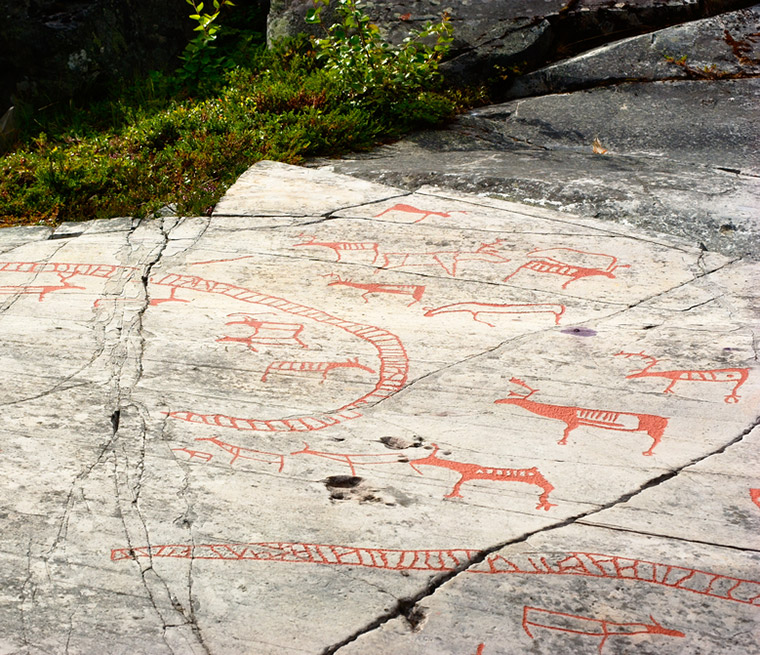
3000 BCE: The era of the fascinating Scandinavian Battle-Axe culture in coastal areas of Norway and Sweden.
A recent research study suggested individuals have ancestry from the Pontic–Caspian steppe herders, with components originating from hunter–gatherers and Early Neolithic farmers. This means there was migration into Scandinavia.
2800 BCE: Agricultural practices become more sophisticated and widespread. Oats and barley are common crops, and pigs, cattle, sheep, and goats become domesticated, forming the basis of Norwegian farming life for millennia to come.
The Bronze Age in Norway
The copper and tin in the bronze from the Bronze Age came from people far away. Globalisation was now a thing for the first time. This period of increased contact and exchange can be seen as a precursor to the Viking Age, as Norway developed into a maritime society.
1700 BCE: The Early Bronze Age begins in Norway, marked by the introduction of bronze tools and weapons. The raw materials and knowledge of bronze working were imported from central Europe.
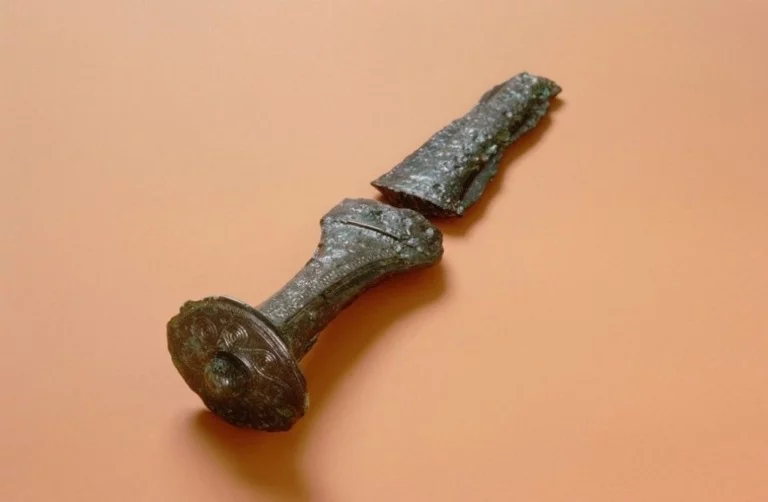
1100 BCE: The transition into the Late Bronze Age. People maintained close trade links with Mycenaean Greece, and became expert metalworkers. The number and density of metal deposits saw wealth develop.
Iron Age in Norway
The transition into the Iron Age is marked by change. A changing climate caused a dramatic change in the flora and fauna leading to migration southwards.
Also, the expansion of Hallstatt culture from the south caused cultural shifts. Northern Iron Age culture was likely spearheaded by speakers of Germanic languages, long before the Viking Age came to the fore.
500 BCE: This period is often referred to as the “Findless Age” due to the scarcity of archaeological evidence, suggesting a decline in population or nomadic lifestyles. The arrival of Hallstatt culture from central Europe begins to exert influence over Norway, introducing new burial customs and metalworking skills.
100 CE: The Roman Empire begin to exert pressure on the Germanic tribes throughout Northern Europe. This period became known as the Roman Iron Age. Significant trade took place, with coins, vessels, glass objects, buckles and weapons all making their way into Scandinavia.
250 CE: Germanic tribes migrating from the north of the Black Sea influence Scandinavian culture, including the introduction of the runic alphabet, the earliest known form of writing in the region.
Meanwhile, the Sami people begin to establish themselves in northern Scandinavia. However, the extent of their southern settlement during this period is still debated.
450 CE: The collapse of the Roman Empire brings returning Scandinavian traders with gold and silver looted from the continent. These riches lead to an increase in social stratification, as powerful chieftains consolidate control over local farmers and communities, laying the groundwork for the power structures of the Viking Age.
550 CE: Powerful farmers became chieftains and their power increased as other Germanic tribes migrated northwards and local farmers wanted protection.
The Viking Age in Norway
The Viking Age (circa 793–1066) was a time of expansion, exploration, and significant cultural development.
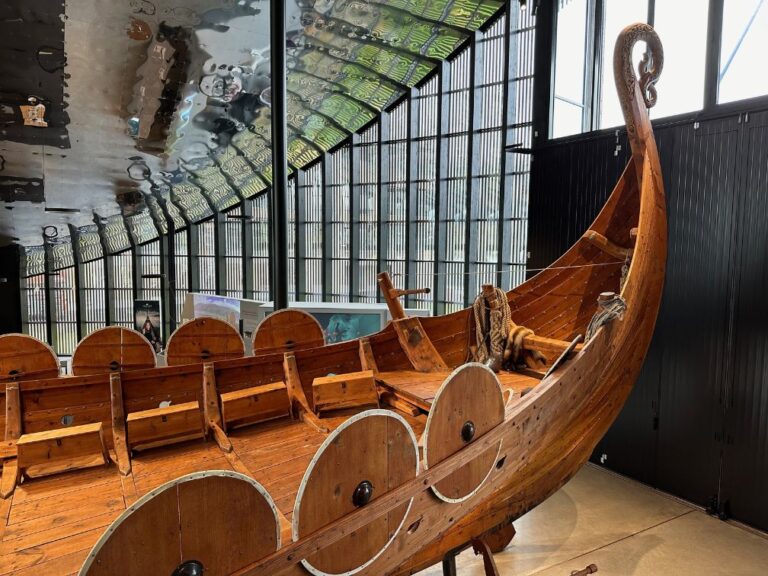
While Vikings are often remembered as fierce warriors, they also played a crucial role in creating social institutions, transitioning to Christianity, and leaving a lasting impact on European history. A full Viking timeline is here, but read on for some highlights.
793: Widely accepted as the “beginning” of the Viking Age, the raid on Lindisfarne was the most notable of the early attacks on the British Isles. According to written sources, “heathen men came and miserably destroyed God’s church on Lindisfarne, with plunder and slaughter.”
Read more: Why Did The Viking Age Begin?
830: Around this time, the famous Oseberg ship, buried near Tønsberg, was constructed and later discovered. This well-preserved Viking ship is one of the finest surviving artifacts from the Viking Age, providing incredible insight into Norse craftsmanship, burial customs, and society.
872: Icelandic sagas recount how Harald Fairhair (Harald hårfagre) unified Norway following his victory at the Battle of Hafrsfjord, becoming the first King of Norway. His efforts to consolidate smaller kingdoms into one Norwegian realm were a pivotal moment in Norwegian history, symbolized today by the famous Sverd i fjell (Swords in Rock) monument in Stavanger.
900: While Viking conflicts continued in Britain over land and power, Viking fleets ventured into new territories, including France and the Mediterranean. Their raids, settlements, and trade connections left a profound mark on European politics, culture, and economies.
981: Expelled from Norway and Iceland, Erik the Red settled in Greenland with 25 ships, people and goods. More than 3,000 Vikings were said to be living on Greenland as farmers at one point. Vikings also discovered Newfoundland after being blown off course on a voyage to Greenland.
995: Olav Tryggvason, who had converted to Christianity during his travels, became King of Norway. He played a central role in promoting Christianity, building the first Christian church in Norway and founding the city of Trondheim in 997.
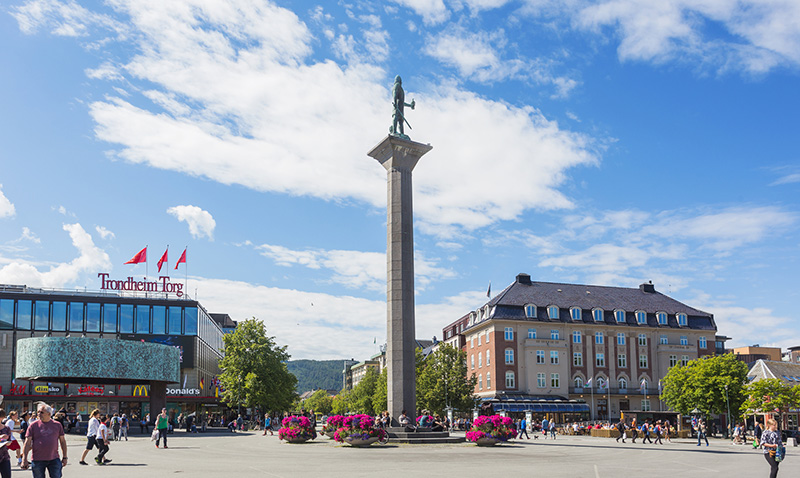
1030: Christian King Olav Haraldsson was killed in the Battle of Stiklestad. After his death, Olav became a martyr and was canonized as Saint Olav, with churches and shrines dedicated to him throughout Europe. His legacy played a crucial role in the Christianization of Norway, though some historians question the historical accuracy of the battle.
The Middle Ages
The Middle Ages in Norway were marked by both religious transformation and political upheaval. The introduction of Christianity took centuries to fully take hold, as many chieftains feared it would undermine their traditional authority.
During this time, many people practiced a blend of Christianity and Norse religion as a form of spiritual “insurance.” Even in some of Norway's oldest stave churches, carvings of Norse mythological figures can still be found.
1100: Norway experienced a significant population increase. Farms were often divided among multiple heirs, which led to smaller and less productive plots of land. Some struggling landowners gave their properties to the king or church in exchange for protection and support.
1130: After nearly a century of peace, a dispute over succession led to a prolonged civil war. Rival claimants to the throne created decades of instability, with chieftains, kings, and local powerbrokers constantly vying for control.
1280: Known as Norway's original ‘golden age', the late 13th and early 14th century was a peaceful time of increasing international relations.
1349: The Black Death devastated Norway, wiping out around a third of the population within a year. Entire communities were destroyed, and the dramatic population loss weakened the monarchy. The church, which suffered fewer losses, became the most powerful institution in the country as tax revenue dropped sharply.
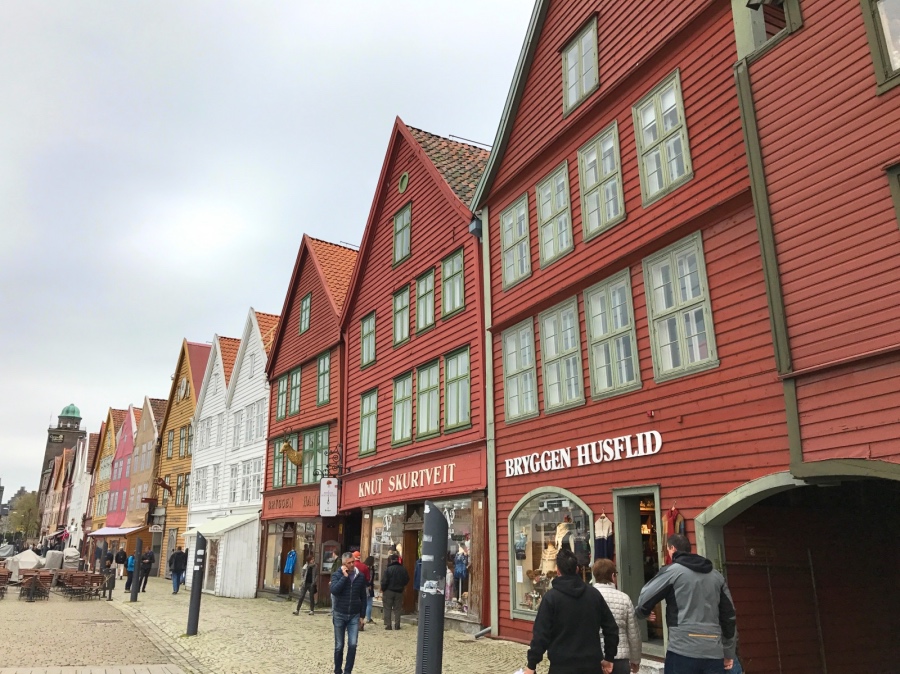
1360: The powerful Hanseatic League, a merchant guild from northern Germany, gained control over much of Norway's international trade, particularly in Bergen. Norway’s economy increasingly became dependent on these German merchants, influencing the country's commerce for centuries to come.
The Scandinavian Unions
The late Middle Ages saw Norway lose its political independence through unions with other Scandinavian countries, dramatically altering the course of its history. Although Norway was often overshadowed by its more powerful neighbors, these unions laid the groundwork for future relationships between the Nordic nations.
1397: Norway, Denmark, and Sweden entered into the Kalmar Union, a political union under a single monarch, Margaret I of Denmark. The union sought to unify the three kingdoms and counter the growing influence of the Hanseatic League and the Holy Roman Empire.
However, each kingdom retained its own legal systems, languages, and cultures. While Margaret was a capable ruler, tensions between Sweden and Denmark over dominance in the union persisted for over a century.
1434–1523: The Engelbrekt Rebellion in Sweden and frequent internal conflicts between Denmark and Sweden weakened the union. Sweden effectively seceded in 1523, ending the Kalmar Union, though Norway remained under the Danish crown. The dissolution of the Kalmar Union resulted in an even stronger Danish influence over Norway, which would last for several centuries.
1524–1814: After the dissolution of the Kalmar Union, Norway entered a personal union with Denmark, known as the Dano-Norwegian Union. Although the two nations retained separate laws, currencies, and militaries, Denmark held the dominant position in the union.
Norway’s political influence dwindled during this period, with its resources largely controlled from Copenhagen. Despite this, Norway maintained its own identity, particularly through language and cultural traditions, and its maritime industries continued to develop.
The Road to Independence
1814: After the Napoleonic Wars, the long-standing Dano-Norwegian Union was dissolved. Under the Treaty of Kiel, Denmark was forced to cede Norway to Sweden as part of the post-war settlements.
This event marked the end of nearly 300 years of Danish rule, opening a new chapter in Norway’s political history. However, the cession did not bring immediate freedom, as Norway’s fate was now tied to Sweden, which sought to bring Norway into a union under its crown.
In a bold move for independence, Norwegian nationalists gathered at Eidsvoll to draft a constitution that would assert Norway’s sovereignty. The signing of the constitution established Norway as a constitutional monarchy, free from Danish rule.
However, this independence was short-lived. Sweden, unwilling to lose control of Norway, swiftly moved to assert dominance, leading to the brief Swedish-Norwegian War.
Following Sweden’s victory in the war, the Convention of Moss was signed, which forced Norway into a personal union with Sweden.
Although this was a setback for Norwegian nationalists, the terms of the agreement allowed Norway to retain its newly written constitution and significant domestic autonomy, a concession that maintained the spirit of independence even under Swedish rule.
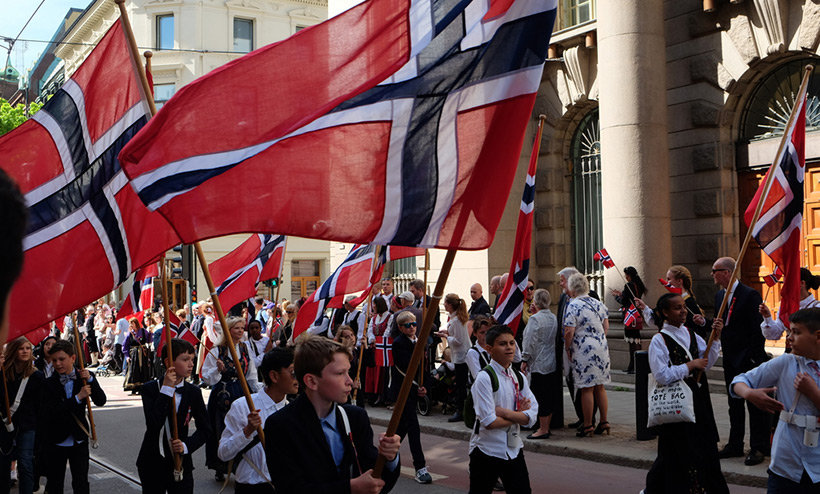
1814–1905: For nearly a century, Norway remained in a personal union with Sweden. While the two countries shared a common monarch and foreign policy, Norway was able to govern itself in most internal matters.
This period saw the growth of nationalistic movements, as Norwegians increasingly sought to regain full control over their affairs and distance themselves from Swedish influence.
Tensions between the two nations would simmer throughout the 19th century, eventually leading to the peaceful dissolution of the union in 1905, when Norway finally achieved full independence.
The World Wars
1914-1918: Although Norway remained neutral during World War I, the nation played a role in global trade and diplomacy. As a significant shipping power, Norway’s merchant fleet became vital for transporting goods, particularly for the Allies. This neutrality came at a cost, as Norway lost approximately 1,200 ships and thousands of sailors due to the war.
1940-1945: Norway was occupied by Nazi Germany for most of World War II, following the German invasion on April 9, 1940. Despite initial resistance, Norway was quickly overwhelmed, and King Haakon VII and the government fled to London.
Norway played host to several key moments in the war, including the Battle of Narvik in 1940, which was a crucial early victory for the Allies, and Operation Claymore, a successful British raid on the Lofoten Islands in 1941.
Another significant event was the Heavy Water War, in which Norwegian resistance fighters, with British support, sabotaged Germany’s attempts to produce heavy water—a key component in their nuclear weapons program.
The occupation deeply scarred the nation, but the resilience of the Norwegian people during the war years became a point of national pride in the post-war era.
1952: Oslo hosted the 1952 Winter Olympics. The city put its name forward to show the world they had recovered from the war. In total, 694 athletes from 30 nations participated. Norway won 16 medals, 7 of them gold.
The Oil Age
1966: The first exploratory oil well was drilled in the North Sea, sparking hopes of discovering valuable natural resources. Although oil was found within a year, initial surveys suggested the deposits were not economically viable, and optimism waned.

1969: The discovery of oil in the Ekofisk field by the drilling rig Ocean Viking transformed Norway’s fortunes. Located in the Norwegian sector of the North Sea, this find marked the beginning of the oil age in Norway. It led to an economic boom that would define the country’s future, turning Norway into one of the world’s leading petroleum exporters.
1972: The Norwegian government creates Statoil, which would later become Equinor. Building up Norwegian competence and participation on the Norwegian continental shelf were the primary aims. The government of Norway remains the largest shareholder today.
1972: 53.5% of Norwegians voted “no” in a national referendum on joining the European Community (EC). Following the result, Norway's prime minister resigned.
1979: Bergen’s former Hanseatic trading district Bryggen becomes Norway’s first UNESCO World Heritage site. UNESCO praised the renovation work following fires: “rebuilding has traditionally followed old patterns and methods, thus leaving its main structure preserved.”
1987: The Sami Act was passed by Norway’s Parliament, leading to the establishment of the Sami Parliament in 1989. This body gave the Sami people a formal voice in governance, particularly in matters affecting their culture and traditional lands.
1990: Norway's Parliament passed a law to establish the Government Petroleum Fund. It was designed to invest the surplus revenues from the petroleum sector, and would go on to become the world's largest sovereign wealth fund.
1992: Norway held a second referendum on European Union (EU) membership, with 52.2% of voters once again rejecting membership. The “no” vote underscored Norway's desire to maintain its economic and political independence, despite close ties to the EU through the European Economic Area (EEA) agreement.
1994: Norway once again hosted the Winter Olympics. This time, the eyes of the world fall on Lillehammer. It was very cold during the Games, which is potentially why Norway did so well, dominating the medal table.
Norway in the 21st Century
We’re not even one-quarter of the way into the 21st century, yet a lot has happened in Norway these last few years.
2004: When navigating through shallow waters near Bergen, the cargo vessel MV Rocknes overturned, killing more than half its crew.
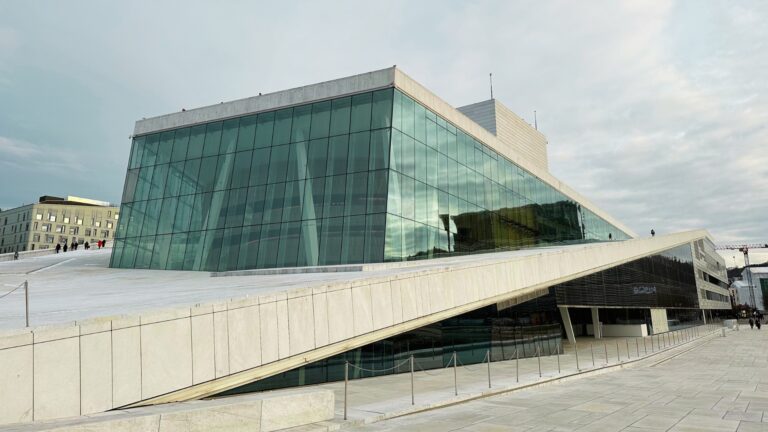
2008: A symbol of modern Norway, Oslo Opera House opened its doors for the first time. Architects Snøhetta would go on to win awards for the eye-catching watefront architecture.
2011: Norway experienced its worst act of terrorism on 22 July, 2011, when a far-right extremist carried out a bombing in Oslo’s government quarter and a mass shooting at a political summer camp on the island of Utøya. The twin attacks left 77 people dead, most of them teenagers. The tragedy shook the nation to its core, but also reinforced Norway’s commitment to democratic values and openness.
2012: Norway’s population reached 5 million for the first time, reflecting the country’s steady growth fuelled by immigration, economic opportunities, and a high quality of life.
2015: The Rjukan-Notodden Industrial Heritage Site becomes Norway’s eighth UNESCO World Heritage site. UNESCO called it “an exceptional combination of industrial assets and themes associated to the natural landscape.”
2017: The Church of Norway was officially separated from the state, becoming a national church rather than a state church. While it still receives funding from the government, the move represented a significant shift in Norway’s religious landscape, further distancing the country from its past as a Lutheran state.
2020: Norway legalises multiple citizenships, becoming one of the last European countries to do so. Previously, anyone wishing to become a citizen of Norway had to renounce their existing citizenship.
I hope you enjoyed this quick journey through Norway’s timeline. Check out our history blog for lots more detailed articles on specific moments in Norwegian history.

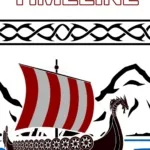

Thanks for providing this history of Norway. I lived there for the first 8 years of my life & left there in Jan. 1952 during the Oslo Winter Olympics.
Turid
Sorry you left , maybe you had no choice but to leave . I Have known for some time that I have Norwegian ancestors. I have something I can’t explain calling me to my homeland .
Very interesting time line ..
Thanks
N. Paulson
I also lived in Norway(Aalesund) from 1943 until 1950 when we immegrated to Bellingham, Wa. I was 7 years old, many times I wish I was still there.
Recently I joined 23&me. Mine blowing, my grate grandfather is Ole Gunleksen. 1837-1915. DNA says he was from Kongsberg area, came to settle in Colfax Wisconsin. His farm name was Vassbotten. I’m 73 and want to know my roots. Want to visit before I pass.
Hey John, This might be helpful. Be sure to verify its relevancy and accuracy.
https://www.ancestry.com/genealogy/records/ole-gunleksen-vassbotten-24-2gqcml
I feel the same way about visiting my heritage home before I die. I will be 70 in May. My dad and his family came here from Norway when my dad was 7 years old. My grandfather was a master builder/carpenter in Norway and the U.S. My dad became an architect. I still have family in Norway, Oslo area. Hope to be able to visit them within the next couple of years.
Kathleen Barth
Thank you for the wonderful information on this website. I truly enjoy learning about my historical roots!
Thank you for this timeline.
I’m half Norwegian by lineage. My grandmother emigrate to the U.S. when she was 11 and my grandfather was the son of immigrants. I grew up in Seattle, in the Ballard area, and went to school in Bellingham for a time.
I’m still trying to find out how the Norwegians and the Italians crossed paths and when. Was it during that circa 900 time period when Vikings explored the Mediterranean? Krumkake is so close to both pizzelles and canoles and Norwegians celebrate Santa Lucia, which is obviously not Norwegian! It’s Italian!
Came to the States from Bergen when I was nine, in 1957. Spent the last 20 years or so tracing my Sabye ancestry. Made it back to Madz Hanson Sæbye born 1640 in Sæby Denmark and moved to Vik I Sogn in 1673, opening one of the first Inns in the area. He was known as the bellringer at the local church. I call him generation 1 as I can’t seem to get further back. His great grandson Hans Peter M Sæbye (Gen 4) was a coppersmith in Vik. His son Anders S. moved to Bergen as a coppersmith and is listed in the Feb. 4, 1866 Bergen Community Census. The family remained in Bergen with various occupations including my Great Grand father who owned a fancy carriage business in 1908. I have many pictures of him and his stables. Fast forward to Generation 8, my father Henry S, a carpenter in Bergen, and the youngest of 5 kids, and the last to move to the States in 1957. We are now on Gen 11 with our grandchildren, and the story continues.